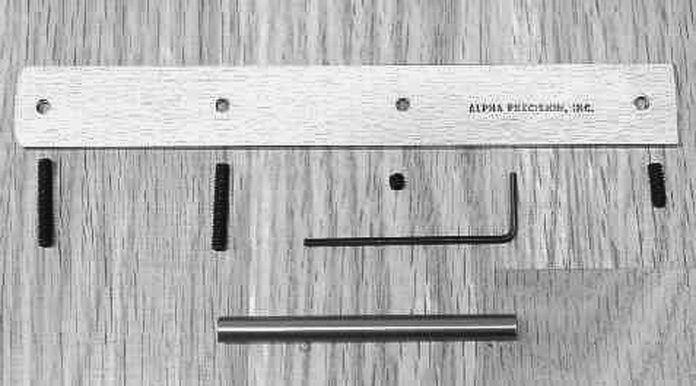Much popular opinion around handgun slides posits that slide tightening is not particularly important for maximum accuracy. Instead, barrel-to-slide fit and barrel and bushing fit are more frequently stressed. With some of the quick packages that the gunsmith offers, barrel and bushing fit are good enough for carry purposes, or perhaps even for IDPA-competition pistols. But when a shooter demands top-notch accuracy, his pistol should have a good tight slide and frame-rail fit.
I became a believer in this type of work after an experience with a Browning Hi-Power. While we usually think of slide tightening in terms of the Colt 1911, Bob Cogan of Accurate Plating & Weaponry performed this work for me on an old and well-worn Browning. There was a combination of other work, but the slide-to-frame rail tightening resulted in a handgun that grouped inside of 1.25 inches at 25 yards. Not bad for a Hi-Power, and well above the norm for any 9mm Luger pistol.
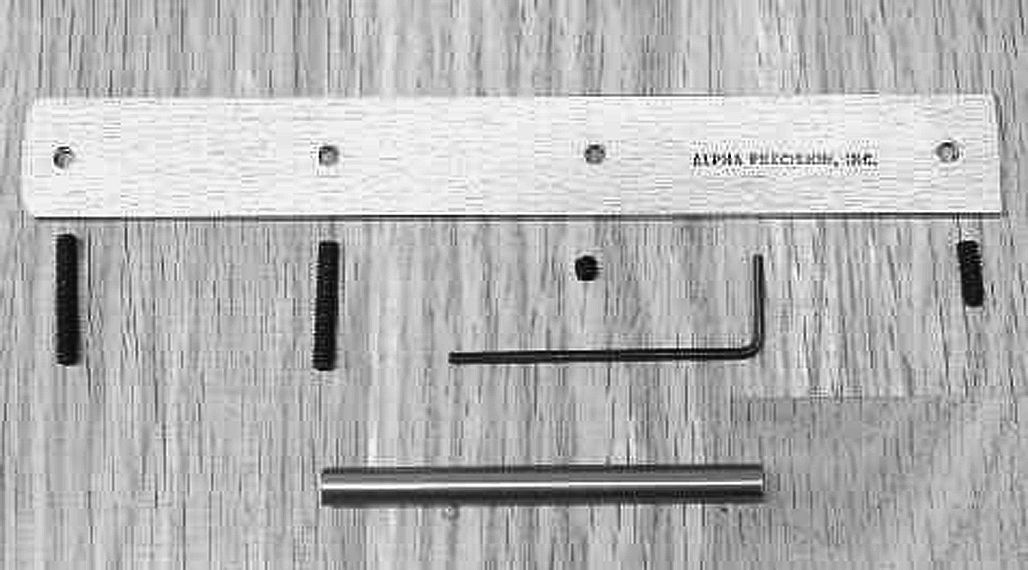
Despite the claims that rail tightening is not necessary, I have enjoyed much the same improved results with the 1911 pistol. Always being one to make up my own mind, I decided to do some testing on an Armalite AR-24. After examining most of the 1911 pistols on the market, I can say none are perfect – far from it. The exceptional production guns I found (and these are “semi-production” products) were the Les Baer and the Wilson Combat, and I wouldn’t attempt to improve upon these pistols. The rest of the crop ranged from pretty good for a factory gun to “I wonder how it shoots at all.” A couple of the foreign-produced guns gave good results as shooters, and seemed reliable enough, but I would not attempt to tighten their slide fit, since they were too sloppy overall. The interesting thing is that the Baer and Wilson pistols have a nearly perfect slide- and frame-rail fit.
To check the 1911, we can use a depth micrometer or the simpler rail gauge. The rail gauge aids in deciding how bad or rough the rails are, and the correct spacer bar for peening the slide rails. The micrometer measures a certain point, while the gauge slips into the slide itself and measures the entire slide rail.
To use a rail gauge, remove the firing-pin stop, firing pin, and extractor from the slide. This allows proper use of the slide rail. When using a rail gauge, the beveled corners of the long gauge are forward. A 7/32-inch rod is supplied with the Alpha Precision gauge I am most familiar with. This rod goes into the firing-pin hole, and allows the rearward screw in the gauge to play against it.
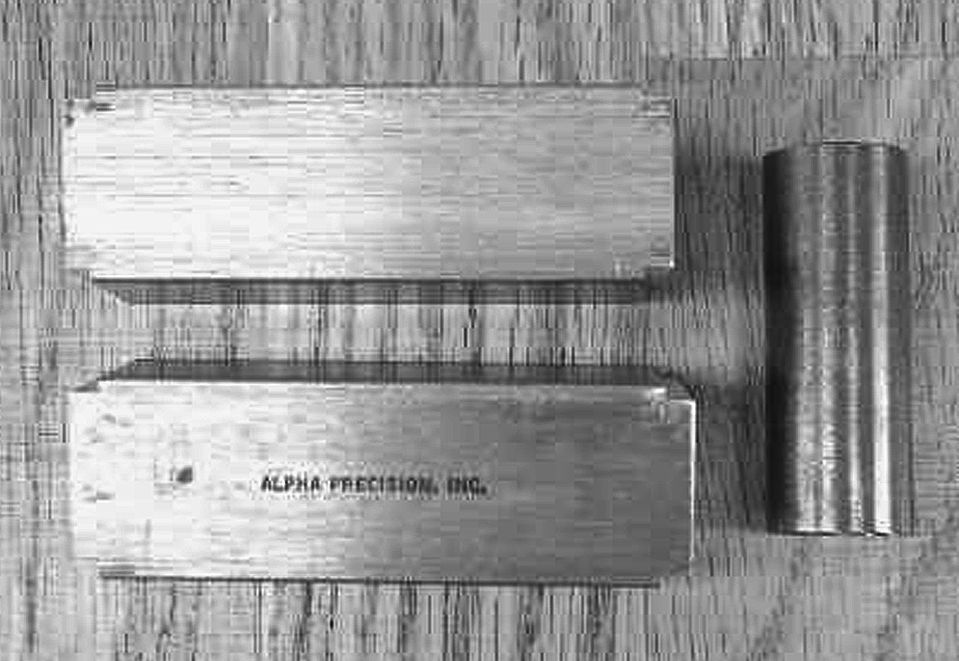
The 6-32 x 3/8-inch screw that bears against the 7/32 rod is first, then a 6-32 x 1/8 and two 6-32 x 3/4 screws are in the gauge. All of the screw heads remain out of the way of other tools and files when working with the 1911 slide.
With the gauge firmly in place, lightly tighten the screws until the gauge rises a bit in the channel for proper measurement. Each point of the slide that contacts the frame should be uniform. Alpha Precision calls for all points to be within .0005 inch of the other. A file or India stone is used to true these points up.
The actual slide tightening is a straightforward process requiring a bit of finesse in order to achieve the proper results. The proper use of slide tightening blocks requires a heavy vise. The vise is opened to allow the tightening blocks to ride inside the vise, with the slide between them. With the Alpha Precision blocks, a round block or fulcrum is included to keep the lower part of the tightening blocks from bowing.
The slide-tightening stop is used at this time. The stop fits inside the slide and has an adjustment which is used as the slide is tightened. The stop is inserted into the slide, and the slide placed between the aluminum tightening blocks. The vise is then tightened and the slide is forced against the slide-tightening stop. Pressure is applied until the slide-tightening stop cannot be moved. Then, vise pressure is released and the slidetightening stop can be moved an inch at a time in the slide and the process repeated. At no time does the vise and slide come into contact. This is all there is to the slidetightening process. After it’s done, there is little if any discernible difference in the slide’s dimensions. However, the slide stop, which is adjustable, can then be cranked down to a smaller adjustment and the process repeated.
At this point, you need to begin checking the movement of the slide at .0001 intervals and checking the fit to the frame. Then we will lap the slide with aluminum oxide, sometimes oiling the slide first, to make fitting easier.
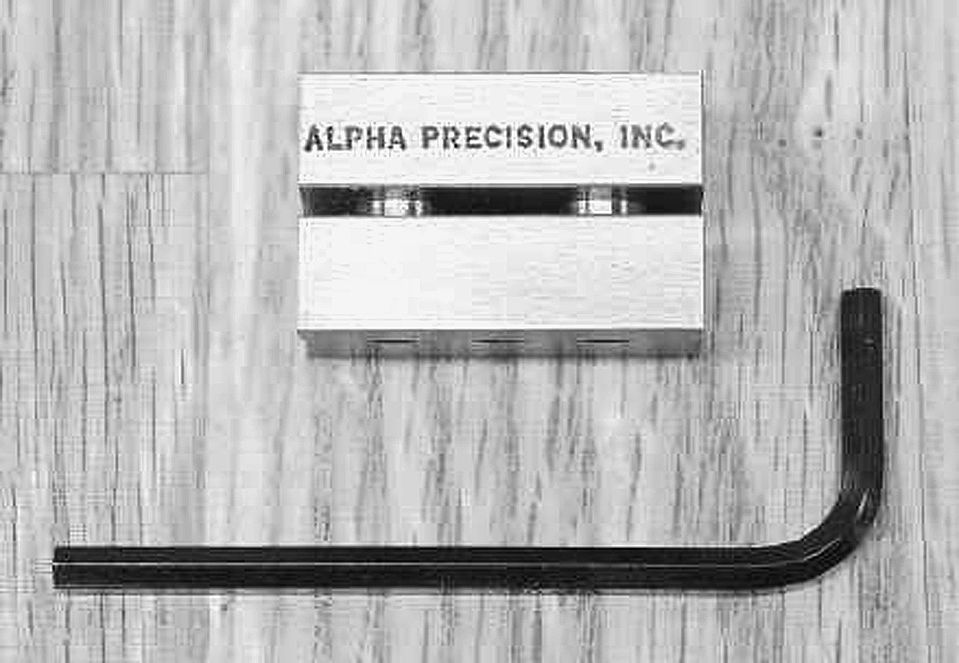
Keep in mind that you cannot expect good results quickly. Often, this process will have to be repeated several times for best results. Some writers have stated that they feel the gun is less reliable with such a tight slide-to-frame fit, even if it is more accurate. Frankly, my experience has been the opposite.
Wilson guns are quite tight in this regard, but are as reliable as any 1911 I have ever used extensively. Likewise, the Accurate Plating Hi-Power has surpassed all expectations. The original factory slide-to-frame fit does not include the time and effort needed for a true, tight fit. There may be bumps and burrs in the gun. When using the rail gauge and polishing properly, the slide rails will be properly polished. There is a minimum fit, but also, ideally, no rough spots or burrs. In the long run, this gives greater reliability along with better accuracy. With less slop in fit, there is less wear. A good barrel and bushing fit is also needed, but all of the very most accurate handguns I have fired have had at least some degree of frame-rail tightening.
A Field Test
Not long ago, I worked with an Armalite AR-24 pistol which I brought up to Bureau Model standards. I fitted various aftermarket parts and a Nowlin match-grade barrel. The pistol has been reliable and accurate enough for general use. The addition of the Nowlin barrel was without question the most important addition to the pistols accuracy. However, one thing I did not do was tighten the slide.
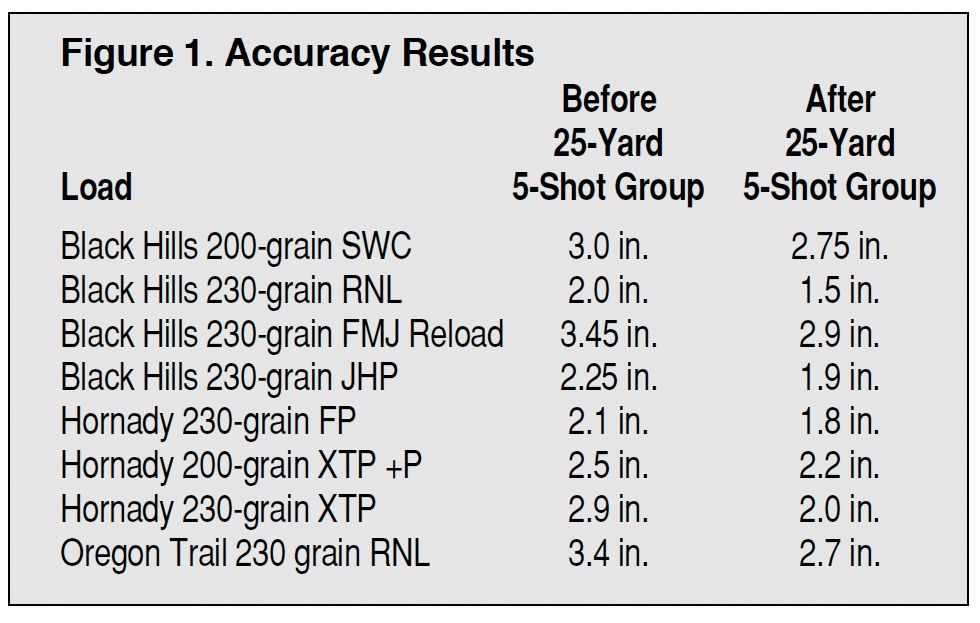
The pistol went from about a 4- inch gun at 25 yards to one capable of 2-inch groups or better with premium ammunition. I elected to tighten the slide rails of this handgun to qualify the improvement. There were no other modifications attempted, all else had been done.
I think the results in Figure 1 speak for themselves. A machine rest might show even greater difference, but after this fitting the gun was more accurate than before. As for reliability, after careful polishing I am certain the gun is more reliable than before.
So don’t be afraid to tighten the 1911 up a bit; it responds well to this work. My own 1911s speak for themselves. Having won matches and taken game for me, I would not change them at all.
Right: Alpha’s slide-tightening stop is being used here to tighten a stainless Colt Gold Cup. The stop is positioned over the entire contact area of the slide-to-frame contact when locked in battery. Pressure is applied with a vise using the heat-treated aluminum blocks. Pressure is applied until the stop cannot be moved, then pressure is released, the stop moved one inch, the slide repositioned on the blocks, and pressure applied with the vise. This procedure is repeated until the slide/frame contact area has been covered.

























